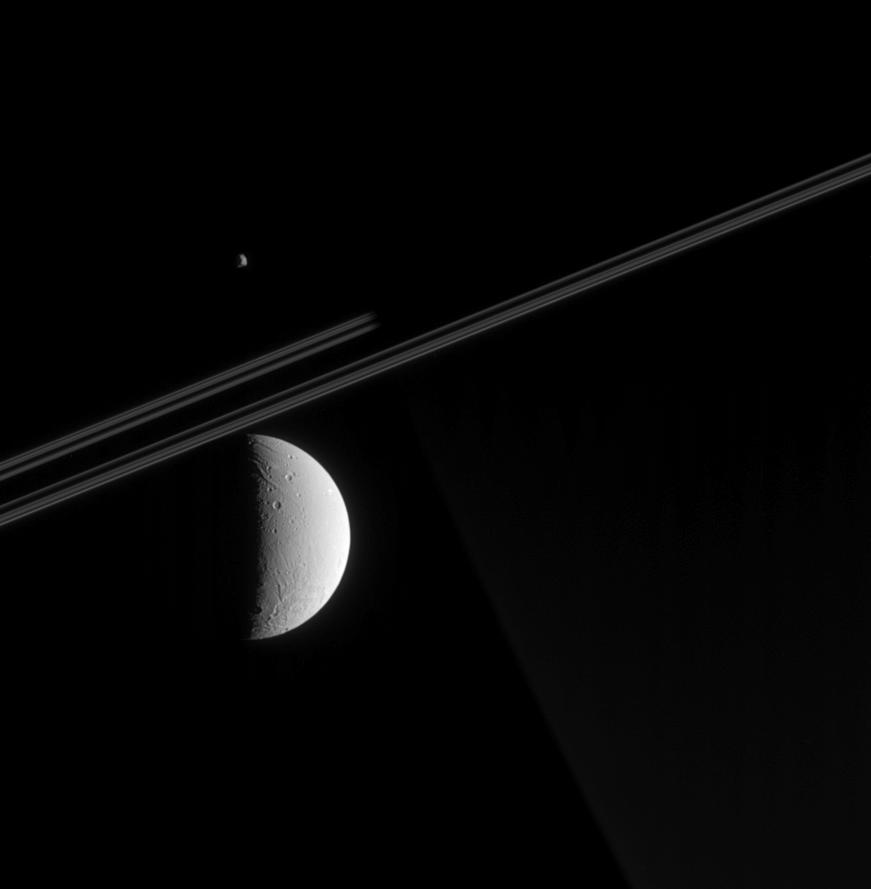Aligned Moons

| PIA Number | PIA07525 |
|---|---|
| Language |
|
Cassini looks toward Saturn's night side in this view, capturing a glimpse of Dione's tortured surface in the foreground and a far-off view of Epimetheus beyond Saturn. The spacecraft was just a 10th of a degree above the ringplane when this image was taken.
Parts of Dione's surface have been stretched and ripped apart by tectonic forces. Some of these faults are visible here, as is a large impact basin (not seen in NASA Voyager spacecraft images) near the moon's south pole. Although this crater's diameter has not yet been measured by imaging scientists, it appears to be wider than 250 kilometers (155 miles), which would make it the largest impact structure yet identified on this moon. Dione is 1,118 kilometers (695 miles) across.
Epimetheus (116 kilometers, or 72 miles across) presents a similar face here to that revealed in a spectacular false-color view from March, 2005 (see Epimetheus: Up-Close and Colorful ).
The image was taken in visible light with the Cassini spacecraft narrow-angle camera on May 5, 2005, at a distance of approximately 910,000 kilometers (570,000 miles) from Dione, 1.28 million kilometers (800,000 miles) from Epimetheus and 1.42 million kilometers (880,000 miles) from Saturn. The image scale is 5 kilometers (3 miles) per pixel on Dione and 9 kilometers (6 miles) per pixel on Epimetheus.
The Cassini-Huygens mission is a cooperative project of NASA, the European Space Agency and the Italian Space Agency. The Jet Propulsion Laboratory, a division of the California Institute of Technology in Pasadena, manages the mission for NASA's Science Mission Directorate, Washington, D.C. The Cassini orbiter and its two onboard cameras were designed, developed and assembled at JPL. The imaging team is based at the Space Science Institute, Boulder, Colo.
For more information about the Cassini-Huygens mission visit http://saturn.jpl.nasa.gov . The Cassini imaging team homepage is at http://ciclops.org .
Credit: NASA/JPL/Space Science Institute
